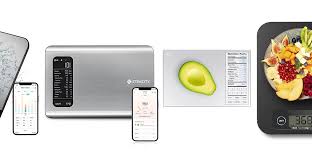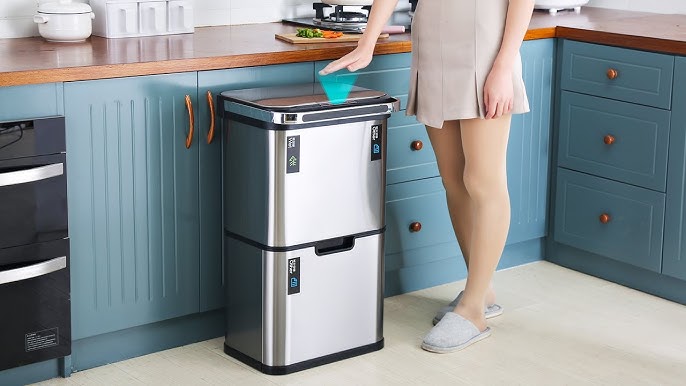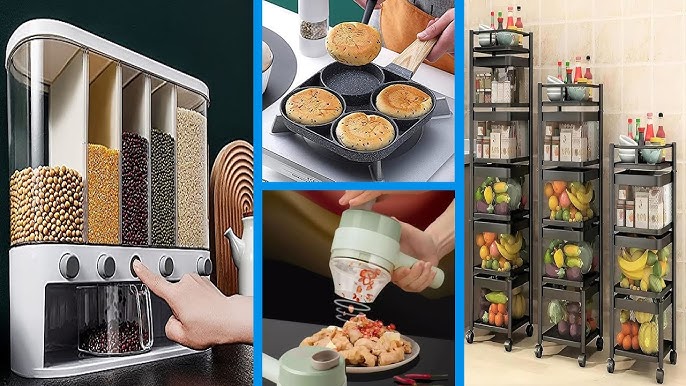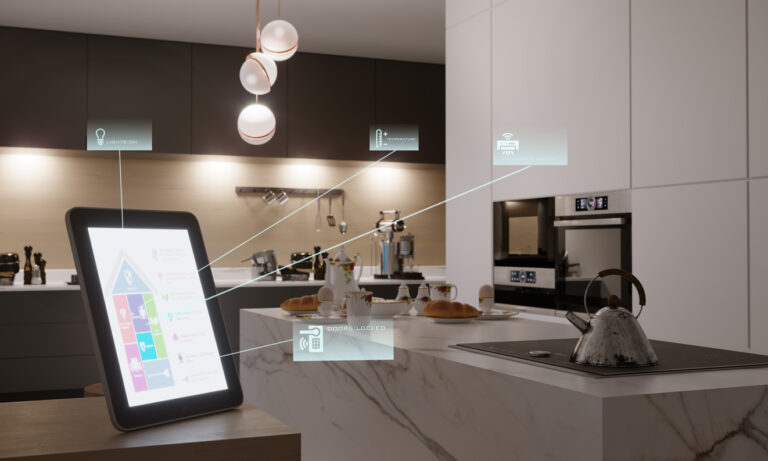In the quest for better health and balanced nutrition, precise diet management is essential. Smart kitchen scales have emerged as powerful tools for individuals seeking to monitor their food intake, track nutritional values, and achieve their dietary goals. This guide will delve into how smart kitchen scales can support diet management, offering insights into their features, benefits, and how to effectively use them.
1. The Role of Smart Kitchen Scales in Diet Management
Precision and Accuracy
- Exact Measurements: Smart kitchen scales provide precise measurements, which are crucial for portion control and accurate calorie tracking.
- Nutritional Data: Many smart scales offer built-in nutritional information, allowing users to track not just weight but also calories, macronutrients, and micronutrients.
Data Integration and Tracking
- App Connectivity: Smart scales often connect to mobile apps that track your food intake, making it easier to monitor your diet over time.
- Historical Data: Track changes in your diet and weight over weeks and months to make informed decisions about your nutritional habits.
Portion Control
- Serving Sizes: Measure and manage portion sizes to prevent overeating and ensure balanced meals.
- Recipe Adjustments: Adjust ingredient quantities in recipes to fit your dietary needs and goals.
2. Key Features to Look for in Smart Kitchen Scales
Accurate Measurement Capabilities
Weight Ranges and Precision
- High Accuracy: Look for scales that provide accurate readings down to the gram or ounce, with a broad weight range to accommodate different food types.
- Tare Function: Ensure the scale has a tare function to subtract the weight of containers and measure ingredients precisely.
Calibration
- Automatic Calibration: Choose scales with automatic calibration for consistent accuracy over time.
- Manual Calibration: Some models allow manual calibration for fine-tuning measurement accuracy.
Nutritional Information and Tracking
Built-In Databases
- Food Databases: Many smart scales come with extensive food databases that provide nutritional information for a wide range of foods.
- Custom Entries: Some scales allow you to add custom food items and recipes to the database for more personalized tracking.
Nutrient Tracking
- Macronutrient Analysis: Track macronutrients such as protein, carbohydrates, and fats.
- Micronutrient Tracking: Monitor micronutrients like vitamins and minerals to ensure a well-rounded diet.
Connectivity and Integration
Mobile App Compatibility
- Syncing with Apps: Look for scales that sync with popular diet and fitness apps like MyFitnessPal, Lose It!, or Fitbit.
- Real-Time Data: Ensure the scale provides real-time data syncing for up-to-date tracking and analysis.
Smart Home Integration
- Voice Assistants: Some scales integrate with voice assistants like Amazon Alexa or Google Assistant for hands-free operation and tracking.
- Smart Hubs: Integration with smart home hubs can provide additional automation and control options.
User Interface and Ease of Use
Display and Controls
- Clear Display: Choose a scale with a clear, easy-to-read display for convenient measurement.
- Touchscreen Controls: Some smart scales feature touchscreen interfaces for intuitive operation.
Multi-User Support
- User Profiles: Select scales that support multiple user profiles, allowing each household member to track their own diet and progress.
- Personalized Goals: Set individual dietary goals and preferences for different users.
3. How to Use Smart Kitchen Scales for Diet Management
Setting Up Your Smart Scale
Initial Setup
- Unboxing and Assembly: Follow the manufacturer’s instructions for unboxing and assembling the scale. Ensure it is placed on a flat, stable surface.
- App Installation: Download the associated mobile app and follow the setup instructions to pair the scale with your smartphone or tablet.
Calibration and Configuration
- Calibrate the Scale: Perform any necessary calibration to ensure accuracy. Refer to the user manual for specific instructions.
- Configure Settings: Set up user profiles, dietary goals, and preferences in the app to tailor the scale’s functionality to your needs.
Measuring Ingredients and Tracking Nutrients
Weighing Ingredients
- Portion Control: Use the scale to measure precise quantities of ingredients for portion control and recipe accuracy.
- Tare Function: Utilize the tare function to subtract the weight of containers and ensure accurate ingredient measurements.
Analyzing Nutritional Information
- Check Nutritional Data: Refer to the scale’s display or mobile app for detailed nutritional information about the food you are weighing.
- Track Macronutrients: Monitor macronutrient breakdowns to ensure you’re meeting your dietary goals, whether for weight loss, muscle gain, or general health.
Integrating with Diet and Fitness Apps
Syncing Data
- Connect to Apps: Sync your scale with diet and fitness apps to log your food intake and track progress.
- Analyze Trends: Use the app’s features to analyze trends in your diet and make adjustments as needed.
Setting Goals and Reminders
- Personal Goals: Set specific dietary goals, such as calorie intake, protein consumption, or balanced meals, and track your progress.
- Reminders and Alerts: Enable reminders and alerts for meal times, portion control, or nutrient tracking to stay on track with your diet.
4. Practical Applications of Smart Kitchen Scales
Weight Loss and Management
Portion Control
- Calorie Counting: Measure food portions to maintain a calorie deficit or meet specific calorie goals.
- Balanced Meals: Use the scale to ensure balanced meals with appropriate portions of protein, carbohydrates, and fats.
Progress Tracking
- Weight Tracking: Track changes in weight and adjust your diet accordingly. Many smart scales also offer body composition analysis for a comprehensive view of health.
- Goal Adjustments: Make data-driven adjustments to your diet based on tracking information and progress reports.
Meal Planning and Preparation
Recipe Management
- Adjusting Recipes: Use the scale to modify ingredient quantities in recipes based on your dietary needs or serving sizes.
- Nutritional Optimization: Ensure recipes meet your nutritional goals by measuring ingredients and analyzing their nutritional content.
Shopping and Inventory
- Grocery Lists: Create grocery lists based on ingredient measurements and nutritional requirements.
- Food Inventory: Monitor pantry inventory and ensure you have the right amounts of ingredients for planned meals.
Health and Wellness
Special Diets
- Dietary Restrictions: Manage special diets such as low-carb, keto, or vegan by accurately measuring and tracking ingredient quantities.
- Allergy Management: Avoid allergens by precisely measuring and verifying ingredient contents.
Nutritional Education
- Learning Opportunities: Use the scale to learn more about the nutritional content of different foods and make informed dietary choices.
- Educational Tools: Utilize app features and nutritional databases to gain insights into healthy eating practices.
5. Troubleshooting Common Issues with Smart Kitchen Scales
Connectivity Issues
Syncing Problems
- Ensure Bluetooth/Wi-Fi is Enabled: Make sure your smartphone’s Bluetooth or Wi-Fi is enabled and within range of the scale.
- Re-Pair Devices: If the scale is not syncing with the app, try re-pairing the devices or resetting the scale.
App Integration Issues
- Update the App: Ensure that the mobile app is updated to the latest version for optimal performance and compatibility.
- Restart Devices: Restart both the scale and your smartphone or tablet to resolve connectivity issues.
Measurement Accuracy Issues
Calibration Problems
- Re-Calibrate: Perform recalibration if measurements seem inaccurate. Refer to the user manual for specific calibration instructions.
- Check Surface: Ensure the scale is placed on a flat, stable surface for accurate measurements.
Display Issues
- Clean the Scale: Wipe the display and surface of the scale to remove any dirt or debris that might affect visibility or functionality.
- Replace Batteries: If the display is not functioning properly, check and replace the batteries if necessary.
Data Syncing Issues
Data Discrepancies
- Check App Settings: Verify that the app settings are correctly configured to receive and display data from the scale.
- Sync Frequency: Ensure that the scale and app are set to sync at the appropriate frequency for up-to-date information.
6. Future Trends in Smart Kitchen Scales
Advanced Features and Innovations
AI and Machine Learning
- Predictive Analytics: Future smart scales may incorporate AI to predict dietary needs and suggest adjustments based on historical data and trends.
- Personalized Recommendations: AI could offer personalized dietary recommendations and meal plans based on individual health data and preferences.
Enhanced Integration
- Expanded Ecosystems: Expect more seamless integration with other smart kitchen appliances, such as smart ovens and refrigerators, for a fully automated cooking and diet management experience.
- Cross-Device Syncing: Improved syncing capabilities with a wider range of health and fitness devices for comprehensive diet and wellness tracking.
Sustainable and Eco-Friendly Solutions
Eco-Friendly Materials
- Sustainable Design: Look for smart scales made from eco-friendly materials and designed with sustainability in mind.
- Energy Efficiency: Future models may focus on energy-efficient designs and reduced environmental impact.
Health Monitoring Integration
- Comprehensive Health Data: Integration with broader health monitoring systems to provide a holistic view of health and wellness, including dietary, fitness, and medical data.
Conclusion
Smart kitchen scales are invaluable tools for effective diet management, offering precise measurements, detailed nutritional data, and seamless integration with mobile apps and smart home systems. By selecting a scale with the right features and using it to track and analyze your food intake, you can take control of your diet, make informed choices, and achieve your health and wellness goals. Embrace the convenience and accuracy of smart kitchen scales to optimize your diet and lead a healthier lifestyle.




